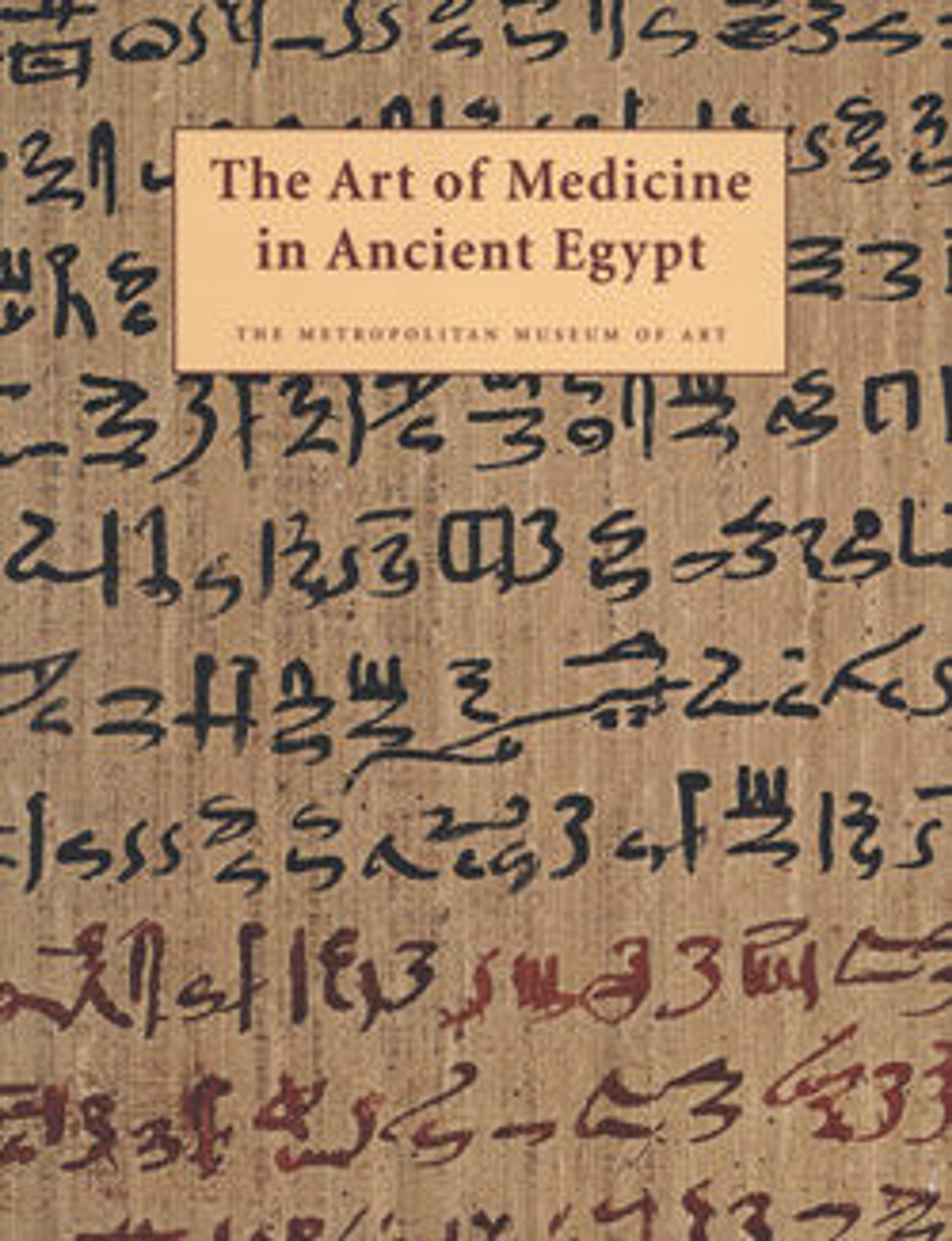Statue of Seated Imhotep
Imhotep was the official who oversaw construction of Egypt's first monumental stone pyramid, at the beginning of the Third Dynasty (ca. 2650-2600 B.C.). The significance of this accomplishment made such an impression on the Egyptians that Imhotep was remembered and honored in later Egyptian history. Beginning in the New Kingdom he was invoked as the patron of writing and wisdom, and by the time this statue was made he had achieved fully divine status, with his own mythology and cult. Imhotep was also invoked for his intercession in sickness and infertility, and he was later equated by the Greeks with their own god of medicine, Asklepios.
Imhotep is almost always depicted with short-cropped hair or a cap, seated and holding an open papyrus scroll. In this example the finely inlaid figure of the god is made separately from his elaborate chair and base. The chair is tall with a rounded back, its seat surrounded by an elaborate cavetto-like molding, and the legs below the seat joined by panels with vertical cutouts.
Imhotep is almost always depicted with short-cropped hair or a cap, seated and holding an open papyrus scroll. In this example the finely inlaid figure of the god is made separately from his elaborate chair and base. The chair is tall with a rounded back, its seat surrounded by an elaborate cavetto-like molding, and the legs below the seat joined by panels with vertical cutouts.
Artwork Details
- Title:Statue of Seated Imhotep
- Period:Ptolemaic Period
- Date:332–30 B.C.
- Geography:Said to be from Delta; From Egypt
- Medium:Cupreous metal, precious metal inlay
- Dimensions:H. 14 × W. 4.8 × D. 9.8 cm (5 1/2 × 1 7/8 × 3 7/8 in.)
- Credit Line:Purchase, Edward S. Harkness Gift, 1926
- Object Number:26.7.852a, b
- Curatorial Department: Egyptian Art
More Artwork
Research Resources
The Met provides unparalleled resources for research and welcomes an international community of students and scholars. The Met's Open Access API is where creators and researchers can connect to the The Met collection. Open Access data and public domain images are available for unrestricted commercial and noncommercial use without permission or fee.
To request images under copyright and other restrictions, please use this Image Request form.
Feedback
We continue to research and examine historical and cultural context for objects in The Met collection. If you have comments or questions about this object record, please contact us using the form below. The Museum looks forward to receiving your comments.
